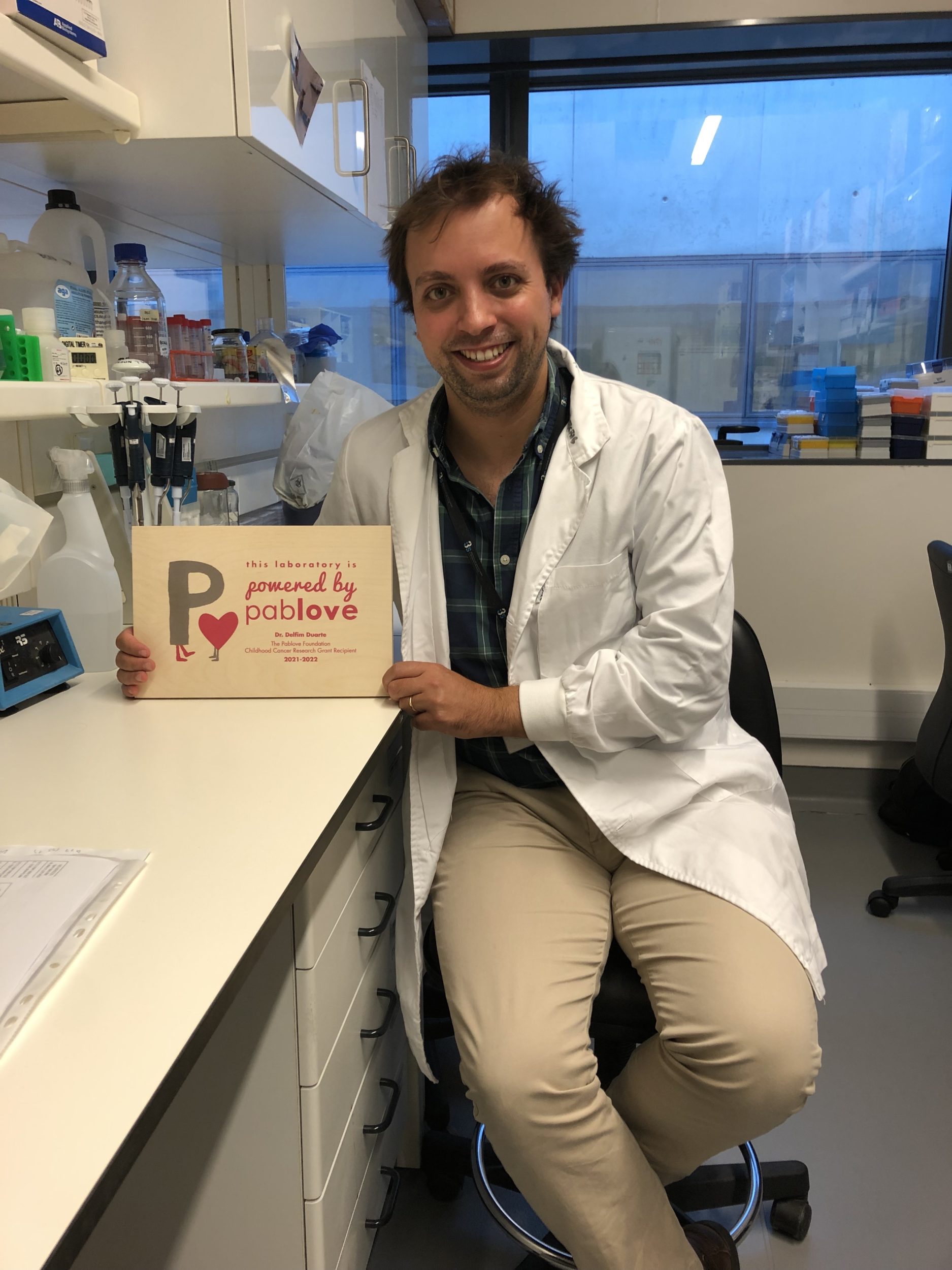Delfim Duarte, MD PhD
Instituto de Investigação e Inovação em Saúde da Universidade do Porto, Portugal
Cell competition as a mechanism to eliminate minimal residual disease in acute myeloid leukemia

Acute myeloid leukemia (AML) accounts for about 20% of pediatric leukemias and is surpassing acute lymphoblastic leukemia (ALL) as the leading cause of death in children with leukemia. A major concern in a subgroup of AML patients is the persistence of minimal/measurable residual disease (MRD), which is composed by chemoresistant leukemic cells and is associated with relapse. Dr. Duarte plans to use his Powered by Pablove research funding to develop and study a cutting edge approach to eliminating MRD in children being treated for AML.
In Dr. Duarte own words:
Acute myeloid leukemia (AML) accounts for about 20% of pediatric leukemias and is surpassing acute lymphoblastic leukemia (ALL) as the leading cause of death in children with leukemia. Existing therapies include toxic chemotherapy and new drugs that are only partially effective in subgroups of patients. A major concern in AML is the persistence of minimal/measurable residual disease (MRD), which is composed by chemoresistant leukemic cells and is associated with relapse. The presence of MRD after chemotherapy is associated with poor prognosis. There is an unmet need of novel therapies that target MRD in AML.
We hypothesize that by promoting leukemia-leukemia cell competition it will be possible to overcome MRD resistance mechanisms. Analogously to chimeric antigen receptor (CAR) T-cells, we propose to isolate leukemic cells and genetically modify them, in this case to express a suicide gene. We will use mouse models of AML to generate proof-of-principal data. Briefly, (1) mouse AML cells will be modified to expresses a human diphtheria toxin receptor (DTR+ AML) and (2) will be infused into leukemic mice treated with induction chemotherapy. Then, (3) DTR+ AML is expected to outcompete and oust MRD from bone marrow niches, rendering MRD susceptible to chemotherapy. Finally (4) diphtheria toxin will be injected and DTR+ AML eliminated, leading to a potential cure.
We will conduct a preclinical study to explore a novel strategy to eliminate MRD and cure high-risk AML patients.